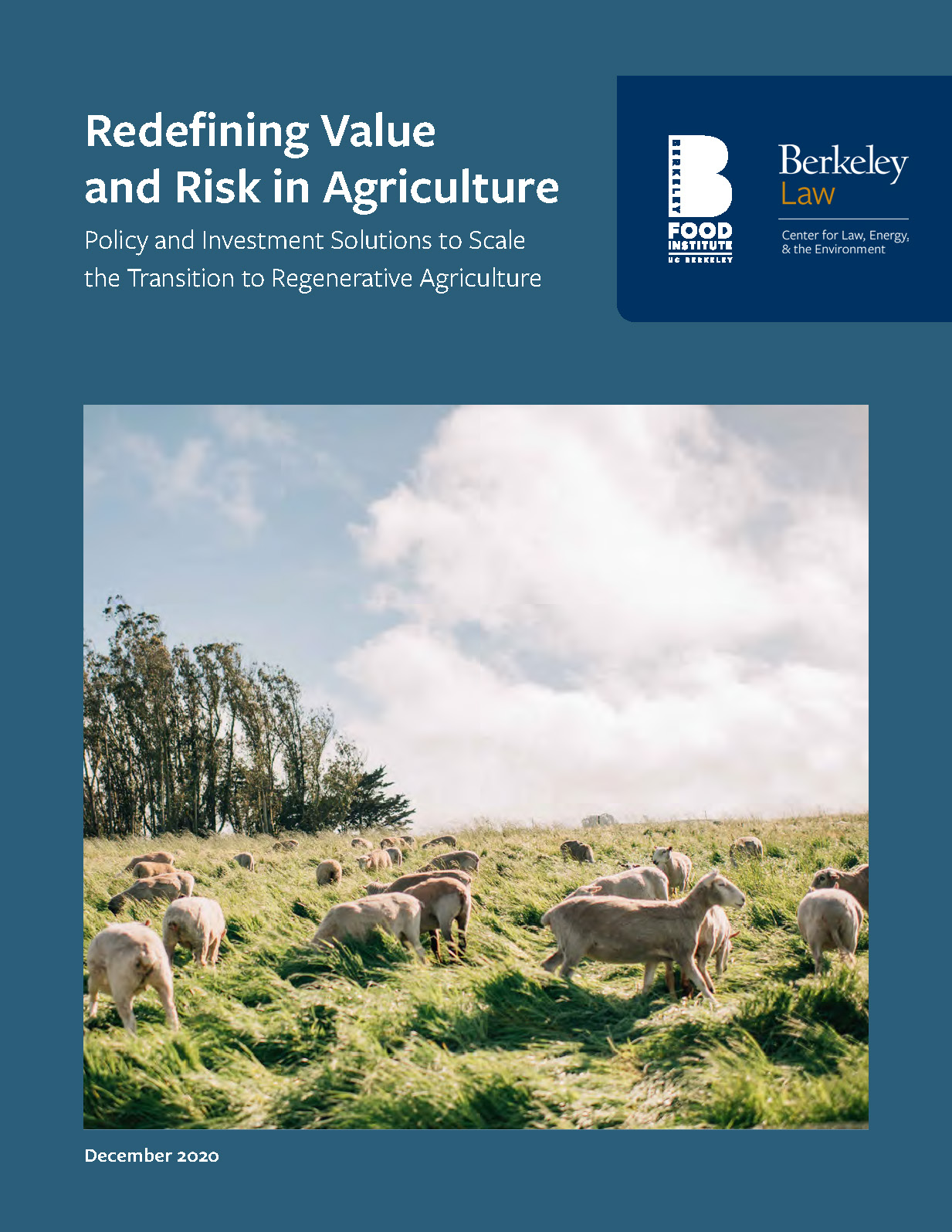The climate fight should ultimately benefit all communities, just as they are all part of the solution. Agricultural communities are no exception.
Farmers and ranchers can implement climate-friendly techniques that both sequester carbon and boost profits and long-term sustainability (sometimes referred to as “regenerative agriculture”). Examples of these practices include crop diversification and rotation, cover cropping, low-to-no tillage, rangeland and cropland composting, and reduced chemical inputs. Beyond carbon capture, these techniques and the principles that underlie them can lead to improved soil quality, higher long-term yields and greater yield stability, and resilience to drought, floods, disease, and pests.
Yet financial, logistical and resource barriers stand in the way of greater adoption. To address these challenges, UC Berkeley Law’s Center for Law, Energy & the Environment (CLEE) partnered with the Berkeley Food Institute to convene farmers, policy experts, advocates, investors, and other stakeholders in the farming community for a virtual roundtable on public-private solutions.
The group’s recommendations were captured in a new report released last month, Redefining Value and Risk in Agriculture: Policy and Investment Solutions to Scale the Transition to Regenerative Agriculture. Highlight solutions include:
- Develop a More Robust Research Base: Research institutions should advance the scientific case for regenerative agriculture and standardize measurement protocols
- Reform Crop Insurance: Congress and the US Department of Agriculture’s Risk Management: Agency should reform crop insurance to reflect the risk reduction benefits associated with regenerative practices
- Redefine Risk: Federal and state governments, banks and investors should account for the risk reduction benefits of regenerative practices and reflect those benefits in financing and direct payments
- Advance State-Level Policies: State governments should expand investments in effective existing policies like incentive programs and peer-to-peer support network initiatives
- Prioritize Equity in Agricultural Policies: Government at all levels should develop more integrated and equitable systems to serve farmers, such as streamlined technology platforms and more robust technical assistance
- Urge Landowners and Supply Chain Actors to Enable Regenerative Production: Landowners and supply chains should help promote regenerative farming among tenants and farmers by incorporating flexibility into contracts and removing barriers
Widespread implementation of these solutions could help in multiple ways, from reducing greenhouse gas emissions and other pollution, improving economic conditions in farming communities, and addressing inequalities between rural and urban areas. To learn more, you can download the report here.



